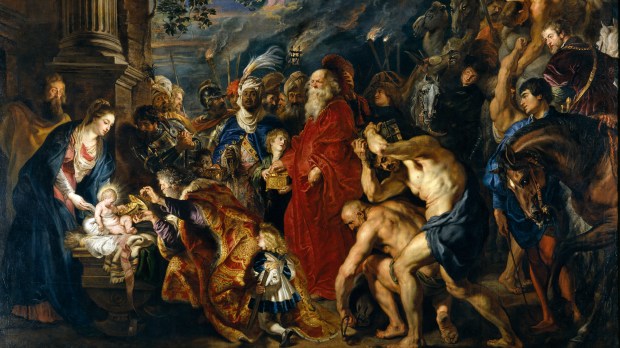Although they have become central to the Christmas story, the Gospels tell us very little, almost nothing, about the magi. Not their names, where they lived, or how many of them were really there. They are featured in the second chapter of the Gospel of Matthew only, and the text simply says they are visitors (the original Greek reads magous, literally, “magi”) from the East, arriving at Jerusalem looking for the child. The text reads as follows:
In the time of King Herod, after Jesus was born in Bethlehem of Judea, wise men from the East came to Jerusalem, asking, ‘Where is the child who has been born king of the Jews? For we observed his star at its rising, and have come to pay him homage.’ When King Herod heard this, he was frightened, and all Jerusalem with him; and calling together all the chief priests and scribes of the people, he inquired of them where the Messiah was to be born. They told him, ‘In Bethlehem of Judea; for so it has been written by the prophet:
“And you, Bethlehem, in the land of Judah, are by no means least among the rulers of Judah; for from you shall come a ruler who is to shepherd my people Israel.”’
Then Herod secretly called for the wise men and learned from them the exact time when the star had appeared. Then he sent them to Bethlehem, saying, ‘Go and search diligently for the child; and when you have found him, bring me word so that I may also go and pay him homage.’ When they had heard the king, they set out; and there, ahead of them, went the star that they had seen at its rising, until it stopped over the place where the child was. When they saw that the star had stopped, they were overwhelmed with joy. On entering the house, they saw the child with Mary his mother; and they knelt down and paid him homage. Then, opening their treasure-chests, they offered him gifts of gold, frankincense, and myrrh. And having been warned in a dream not to return to Herod, they left for their own country by another road.
Matthew 2, 1-12.
Notice the biblical text doesn’t specify if there were three of them or more. It merely says “they,” and that’s about it. Early Christian art (as early as the Catacombs of Priscilla) is responsible for presenting three magi in the adoration scene. In fact, the text does not even number the gifts. Sure, it says they brought gold, frankincense, and myrrh. But that does not necessarily mean it was one crate of gold, or one jar of myrrh, or one gift per person. The magi might perfectly well have been, for example, two —one bringing frankincense and myrrh, and one just gold.

Matthew only says that, after presenting him with their gifts, they went back to wherever they came from —“they left for their own country,” in the singular. Again, the text is rather scarce in details, but it does says “country,” in the singular (the Greek reads xoran autón, “their own country”) —so assuming they came from different places is, again, just speculation. In truth, the Gospel does not provide any details that might help us deduce whether they were Persian Zoroastrians, Babylonian astrologers, or Indian sages. Some early commentators suggest the magi were indeed Persian, but others affirm they were Yemenite Jews instead.

